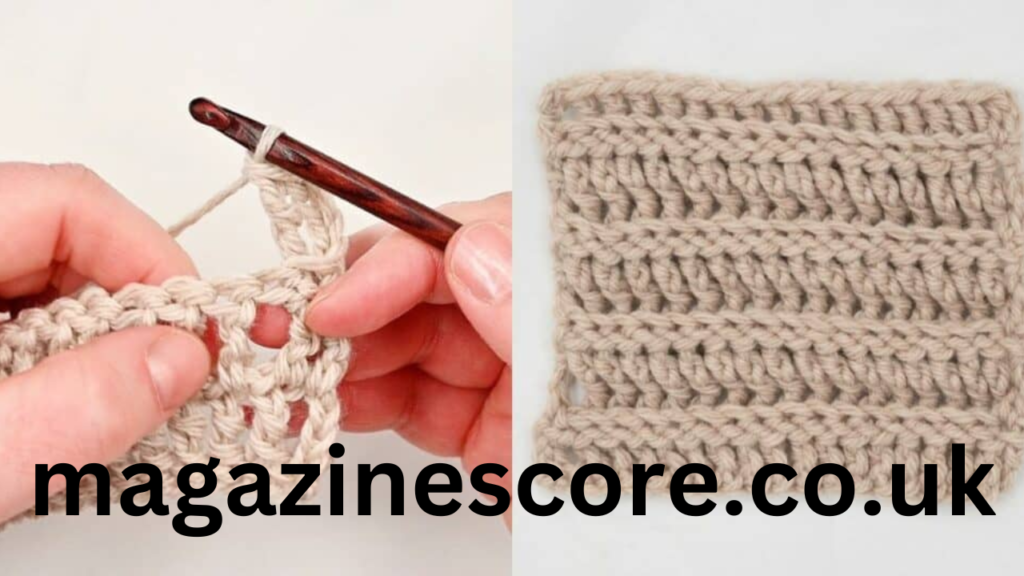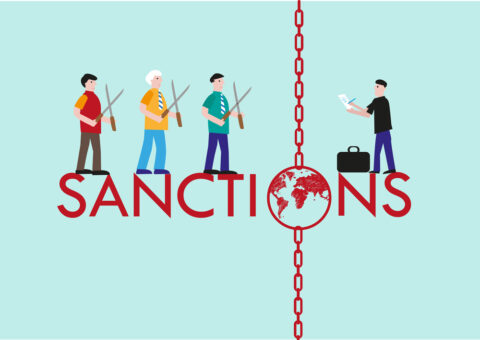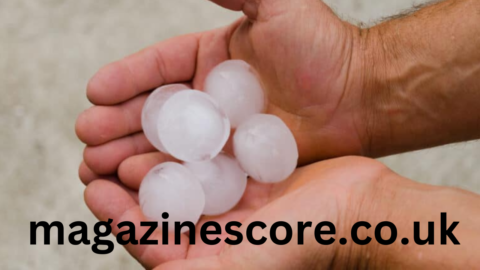Crochet is a beloved craft that allows crafters to create a variety of items, from clothing and accessories to home décor and intricate works of art. At the heart of crochet lies the stitches – these essential techniques transform yarn into beautiful, functional pieces. Whether you are a beginner just starting to learn the ropes or an experienced crocheter looking to expand your stitch repertoire, understanding croc het stitches is vital for any project. In this comprehensive guide, we will explore 100 different crochet stitches, ranging from the basics to more advanced techniques, and break them down for easy understanding.
1. The Basics: Understanding the crochet stitches
Before diving into more complex techniques, it’s essential to master the basic crochet stitches. These stitches serve as the foundation for all other techniques and are often used in combination to create more intricate designs.
Chain Stitch (ch)
The chain stitch is the most basic stitch in crochet. It is the foundation for almost every crochet project and is used to start a row or round. To make a chain stitch, yarn is pulled through the loop on the hook. It is essential for creating a foundation row for any pattern.
Slip Stitch (sl st)
Slip stitches are used to join stitches together or move the yarn to another area of the work. This stitch doesn’t create any height in the fabric and is often used in circular projects or for joining rounds. It creates a flat and smooth seam.
Single Crochet (sc)
The single crochet stitch is one of the simplest and most frequently used stitches in crochet. It is worked by inserting the hook into the stitch from the previous row, yarn over, and pulling up a loop, then yarn over again and pull through both loops on the hook. It creates a tight, dense fabric ideal for projects like amigurumi or bags.
Half Double Crochet (hdc)
The half double crochet stitch is slightly taller than the single crochet but shorter than the double crochet. To make an hdc, yarn over, insert the hook into the stitch, yarn over again, and pull through all three loops on the hook. This stitch creates a fabric that is soft yet firm and provides a moderate level of drape.
Double Crochet (dc)
Double crochet is one of the most commonly used stitches in crochet. It is taller than both single and half double crochet stitches, and it’s perfect for projects that require a looser fabric with more drape, such as blankets, shawls, and garments. The technique involves yarn over, inserting the hook into the stitch, yarn over again, pulling through two loops, and repeating the process for the second set of loops.
Treble Crochet (tr)
The treble crochet stitch is taller than the double crochet, and it creates an airy, lace-like fabric. To make a treble crochet, yarn over twice before inserting the hook into the stitch, yarn over again, pull through two loops, repeat until only one loop remains. This stitch is often used in lace patterns and for creating open, delicate fabrics.
2. Textured Stitches: Adding Depth to Your Work
Once you’ve mastered the basic stitches, you can start experimenting with textured stitches. These add depth and interest to your projects, creating beautiful, intricate designs.
Front Post and Back Post Stitches (fpdc, bpdc)
Front post and back post stitches are variations of the double crochet stitch. They are worked around the posts (the vertical part of the stitch) of the stitches from the previous row, rather than through the top loops. The front post stitch creates a raised, textured effect, while the back post stitch creates a textured ridge that pops out from the fabric.
Shell Stitch
The shell stitch is a decorative stitch that typically involves working multiple double croc het stitches into the same stitch or space. It is commonly used in lace patterns and adds a beautiful, fan-like effect to projects. The number of stitches in the shell can vary, but it usually consists of five double croc het stitches worked into the same stitch.
Popcorn crochet stitches
The popcorn stitch is another fun, textured stitch. It’s made by working several double croc het stitches into the same stitch, then pulling the last stitch over the others to create a “pop.” This creates a raised, bumpy texture, often used for adding dimensional designs.
Puff Stitch
A puff stitch is similar to a popcorn stitch but is made by pulling a long loop through multiple stitches, resulting in a puffier, rounder texture. The puff stitch is ideal for creating dense, raised textures and is often used in both modern and traditional crochet designs.
Crossed Stitch
The crossed stitch is a technique that involves working two stitches into different spaces and then crossing them over one another. This creates a woven look, adding complexity and texture to your crochet project.
Bean Stitch
The bean stitch is a delightful textured stitch that involves working several double crochet stitches together, then pulling the yarn through the loops in a specific way to create a “bean” shape. It adds a lovely textured effect to fabric.
3. Advanced Techniques: More Complex Stitches
Once you’re comfortable with the basic and textured stitches, you can explore advanced crochet techniques that will give your projects a unique and professional look. These stitches require more intricate techniques but are well worth the effort.
Crocodile Stitch
The crocodile stitch is an advanced technique that creates a series of overlapping scales. It involves working several double croc het stitches into a single space, then turning them to form a “scale” pattern. This technique is used in creating beautiful, textured fabrics such as shawls and scarves.
Broomstick Lace
Broomstick lace is a delicate, airy technique that is worked using a long knitting needle or broomstick to create large loops. The loops are then worked into a row of single croc het stitches to form a lace pattern. This technique creates a lightweight, open fabric perfect for shawls and scarves.
Previous article; Merle Hay Mall A Legacy of Reinvention and Community in Des Moines, Iowa
Tunisian Crochet
Tunisian crochet is a unique form of crochet that uses a longer hook. The technique involves picking up loops across a row, then working them off in a particular order to create a dense, woven fabric. Tunisian crochet has many variations, such as the Tunisian simple stitch (TSS), Tunisian knit stitch (TKS), and Tunisian reverse stitch (TRS).
Shell Cluster crochet stitches
The shell cluster stitch is a variation of the traditional shell stitch. Instead of simply working multiple double croc het stitches into the same space, you create a cluster of stitches, often in combinations of double crochet, treble crochet, and other techniques. This stitch adds complexity and texture to your designs.
Ladder Stitch
The ladder stitch is used to create a textured, lattice-like effect in crochet. It is achieved by skipping a certain number of stitches and working into the gaps, creating a pattern that resembles a ladder. This technique is perfect for adding visual interest to the fabric and is often used in intricate designs.
Mosaic Crochet
Mosaic crochet is a technique that involves using multiple colors of yarn to create beautiful geometric patterns. It typically involves working with overlay stitches that create the illusion of “tiles” or “mosaics” in the design. This technique is great for creating detailed, colorful designs.
4. Lace Stitches: Creating Beautiful, Delicate Fabrics
Lace stitches are designed to create open, airy patterns in crochet. These stitches are perfect for creating delicate garments, shawls, and other decorative items.
Filet Crochet
Filet crochet is a type of lace crochet that uses a grid of chain stitches and double crochet stitches to create intricate lace patterns. This technique is often used in creating decorative items such as tablecloths, curtains, and shawls.
V-Stitch
The V-stitch is a simple yet effective lace stitch that involves working a double crochet and a chain into the same stitch. This creates a “V” shape, which adds an open, lacy texture to your crochet projects.
Pineapple Stitch
The pineapple stitch is a classic lace stitch that creates a beautiful, intricate pattern resembling a pineapple shape. It involves a series of double croc het stitches and chains, and it is often used in shawls, tablecloths, and other delicate pieces.
Lace Shell Stitch
The lace shell stitch is a variation of the shell stitch that incorporates chain stitches to create a more open, lace-like fabric. It is used for creating intricate lace patterns in shawls, doilies, and other decorative pieces.
5. Innovative Stitches: Adding Artistic Flair
For those looking to add artistic and innovative touches to their crochet projects, there are several advanced techniques that bring creativity and flair to your work.
Trellis Stitch
The trellis stitch is a unique, open stitch pattern that resembles a trellis, creating a beautiful grid-like texture. It is often used in projects like scarves and shawls to add an airy, lace-like feel.
Feather Stitch
The feather stitch is a delicate stitch pattern that creates a feather-like design. It involves working short rows of stitches in a specific way to form a flowing, textured fabric that is often used in shawls or other lightweight garments.
Criss-Cross Stitch
The criss-cross stitch creates a woven effect that looks like two sets of threads crossing over one another. This stitch adds texture and depth to any project and is often used in geometric or modern designs.
Conclusion
Crochet is a versatile craft, and the possibilities are endless once you have a solid understanding of croc het stitches. From the basic chain stitch to intricate lace and textured designs, learning the many different crochet stitches allows you to create a wide range of items, from simple blankets to delicate shawls and intricate works of art.
As you gain more experience with these stitches, you’ll be able to combine them in creative ways to develop unique patterns and styles. Whether you’re working on a cozy scarf, a delicate lace shawl, or a stunning crochet blanket, the stitches you choose will help define the beauty and functionality of your project.









